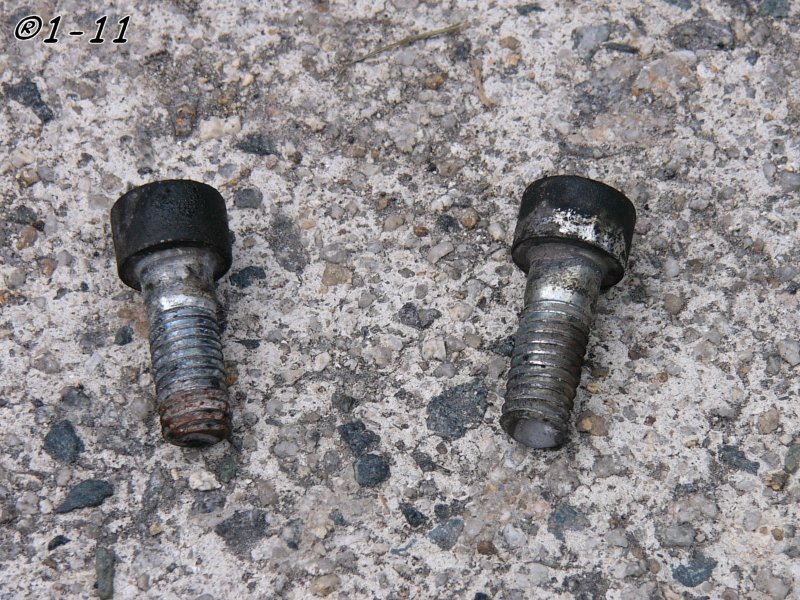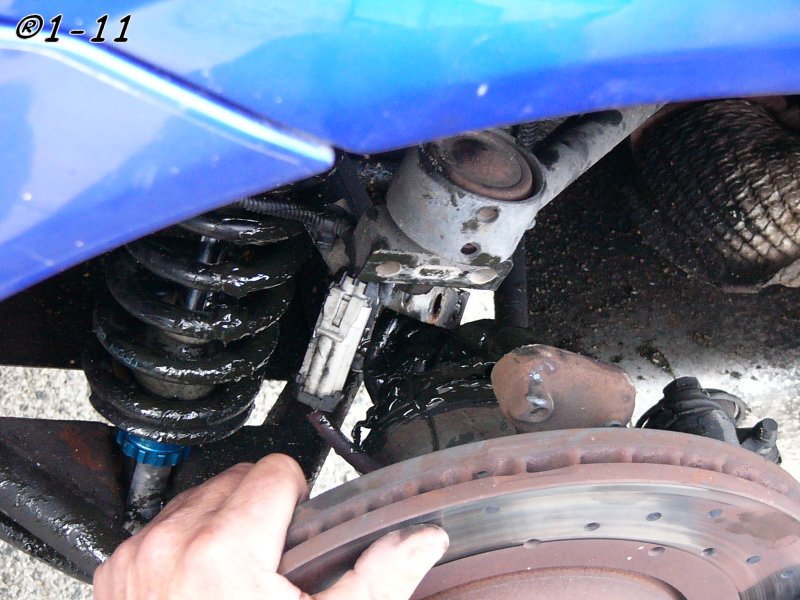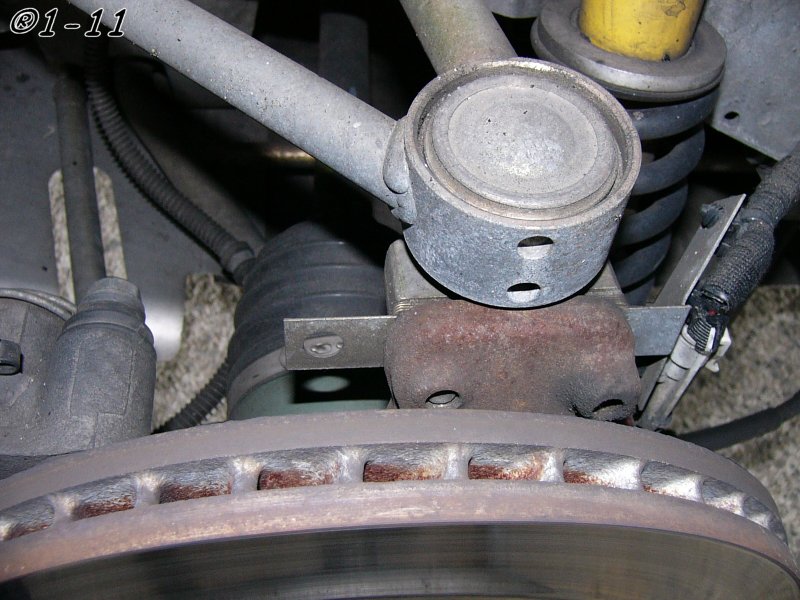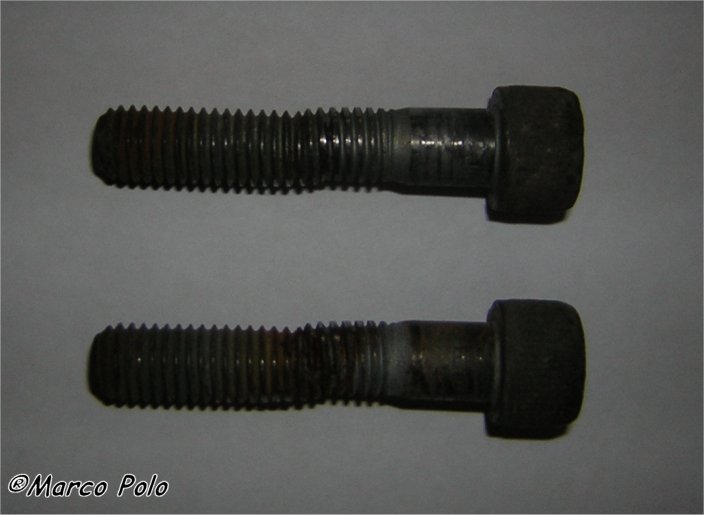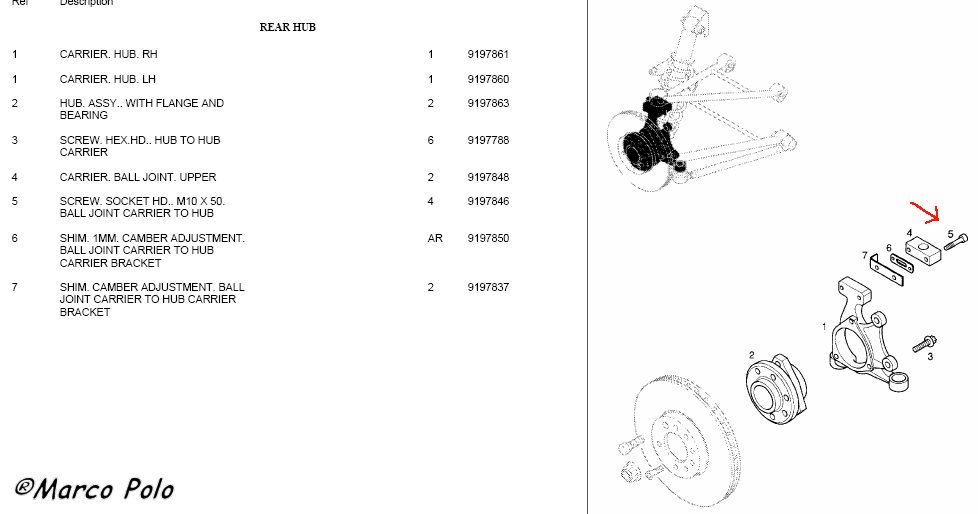Hello,
Well, this is pretty worrying to say the least!!!

Though it's probably just a case of not properly tightened screws.
Anyway, it shows that care must be taken when assembling such load carrying bolted joints - especially, it seems, when using the VX for track days in combination with high performance tires... These tires offer better grip (higher friction between tire and road), and this does when utilized as on track days and driving hard increase the loads on all components i.e. brakes,
hubs, carriers, and chassis etc., BUT in this case the screws should (IMO) NOT experience any shear load, if the bolted joints have been designed and assembled properly.
I don't own a VX nor have I driven one - the Danish tax system does unfortunately not allow a whole lot of these cars on the streets - a new VXT/SpeedsterT costs approx. £ 65k with taxes

. I admire the car though, wish I had one and reguarly read this forum, and since I am a mechanical engineer, I can give you some general and detailed guidelines on how to assemble what is commonly known as a "preloaded bolt joint" - like the ones used to connect the
hub-carrier and the upper ball joint carrier. It definitely seems, that care should be taken. Some of you might already know what to do, and this "primer" might be a bit of a overkill, sometimes down to basics, technical and long, but I prefer to also explain the reasons WHY you should do things, the way I recommend, instead of ONLY telling you WHAT to do

Be warned...
The two screws from Marco Polo's car show clear signs of shearing, which means that the screws have stopped the
hub-carrier and the upper ball joint carrier from relative sliding on a larger scale. This is probably no surprise, but it is NOT the way, that the sliding is meant to be prevented in this and most other cases!!! As Marco Polo says, the forces (from braking) are meant to be "transferred" (right word, I hope...?) from the
hub carrier to (among others) the upper ball joint carrier as non-sliding, FRICTIONAL forces between the mating (contact) faces. You should therefore ensure, that there is sufficient friction between the contact faces, which basically means there sould be a COMBINATION of sufficient clamping force (pressure) and frictional coefficient between the mating faces. To be safe, I recommend ensuring that BOTH are as good as possible, as this "maximizes" the joints' friction load carrying abilities and best of all, it's a "non-fat strengthening" - no weight is added

To simplify, you should be aware of the following things:
1/ "Tightening torque, bolt pretension, clamping force, higher strength grade screws etc."
The reason you tighten these screws to a specified torque value is to ensure, that there is a sufficient, predetermined clamping force (pressure) between the joint's contact faces. Changing the screws to a higher strength grade does of course not automatically give you a higher clamping force (pressure) or resistance to sliding (which is what you actually want). So, naturally you also have to make sure that the tension in the screw is higher, which usually just means tightening the screw to a higher torque value (or sometimes, if possible, reduce tightening friction by lubricating threads and using the same tightening torque). Higher grade strength screws does of course offer greater resistance to plastic shearing and stretching, but this is as mentioned not the best way to deal with the problem at hand. The primary advantage of the higher strength grade screws would in this case be the possibility of higher clamping force and friction between the contact faces. Also the safety against separation of the clamped parts is increased, and believe it or not - the screws feel less of the external separating forces, the more the screws have been pretensioned/tightened.
However, caution is required when tightening the screws beyond the specified standard torque value, so that you don't strip the threads in the
hub carrier !!. The threaded base material (
hub carrier) MAY NOT have sufficient strength to withstand the higher screw tension, but if the material is ductile and a lot of threads are "engaged" (right word, I hope ?), it is usually not a problem. A bit of feel and common sense might be useful

.
If replacing the screws to higher strength grade, I would suggest using strength grade 10.9 bolts, as Arno mentioned being used on the upgraded Lotus. But if the pretension in the bolts is not also increased at the same time, there isn't much point in using 10.9 bolts. I cannot specify a precise torque value, since I don't know the standard tightening torque value for the 8.8 bolts or for which assembly conditions it was specified (with or without washer, thread lubricant/anti-seize, what kind of lubricant etc.??). 10.9 bolts are usually tightened to a 35-50% higher torque value than 8.8 bolts. For example 10.9 bolts installed with a hardened washer and threads greased with molybdenum-disulphide have a recommended tightening of about 60 Nm (vs 44 Nm for 8.8 bolts)
IF I knew for a fact, that the material of the
hub carrier was
strong enough to handle the higher screw pretension, I would even recommend 12.9 bolts. The higher the clamping force - the better, 12.9 bolts would (all other things equal) give a 60 % higher friction load carrying ability over 8.8 bolts.
The difference between the brittleness of 10.9 vs 12.9 screws is quite small (the latter being neglectable (hope it's the right word...) more brittle), and if the screw is properly tightened, it is very unlikely, that it will ever fail during operation, so the brittleness should really not be concern.
It is as mentioned also good, common practice NOT to re-use screws, that have been tightened very close to or beyond the point of yielding (as with these) - use new screws whenever disassembling the joint.
2/ "Evenness of contact faces"
It is also important to ensure that the surfaces mate properly, which usually means that they have to be flat (no MACROscopical unevennesses) and not leave gaps that need to closed when being clamped together. This is done so that the preload in the screws is not "wasted" on closing gaps, because the elastic stresses in the clamped parts thereby reduce the pressure and hence the friction between the mating faces. However, I don't think, that this will be a problem in this particular case.
3/ "Condition af contact faces"
The four (or six, in case of using a camber shim) contact faces must also be THOROUGHLY cleaned before assembly. This means removing all rust, dirt, dust, oil etc. - basically anything that could otherwise contaminate the faces and potentially reduce the friction coefficient between the contact faces. This is an often overlooked way of ensuring a high friction coefficient - sometimes the friction can be doubled without to much trouble. Often sandblasting the mating faces is used to achieve a high surface roughness and friction coefficient. If corrosion of the contact faces is a problem, they can be painted with a very thin layer of an appropriate zinc-silicate paint.
So, to sum it all up, I would suggest using the following procedure when assembling the "
hub carrier-upper ball joint carrier" joint (and a lot of other "critical" preloaded bolt joints):
1. Thoroughly clean all mating surfaces, using a steel brush to remove all rust, dirt etc. and using for example brake cleaner or some other appropriate degreaser to remove any oil, grease etc.
2. Assemble parts, fit and handtighten the screws. I would recommend using a hardened washer under the screw head, as this increases the precision in reaching the correct screw pretension when tightening. The washer also lowers tightening friction and greatly reduce surface pressure on the base material, which can help prevent the screw head from "settling" (plastic deformation of the base material under the screw head, which will reduce the clamping force), especially when using 10.9 or 12.9 bolts tightened to their respective correct tighening torque. Make sure that the screw with the washer installed is long enough, so that still at least approx. 20 mm of thread is engaged. Using a suitable grease ie. molybdenum-disulphide also lowers tightening friction and can increase the precision. Be careful not to get any grease on the mating faces.
3. Tighten the screw to the specified torque - preferably using a calibrated, good quality torque wrench - I assume it is approx. 45 Nm for 8.8 bolts and approx. 60 Nm for 10.9 bolts. Remember that the higher tightening torque of the 10.9 bolts also increases chances of stripping the threads in the
hub carrier! Those of you familiar with DTI washers and angle tightening/torquing probably know what to do, though these methods might be a bit of a precision overkill

I hope this information is helpful and that I despite my somewhat "bad" english (I'm from Denmark) have expressed myself clearly enough - otherwise, please correct me if something is wrong or ask me if it's a bit unclear.
Further reading on bolted joints:
http://home.jtan.com...KIAT/kiat_1.htm
Cheers ;-)
Martin
